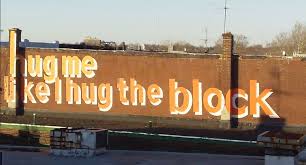
Street art is no longer limited to images and murals—it is increasingly embracing the written word. Across cities, walls are becoming canvases for poetry, with short verses, haikus, or bold one-liners appearing in unexpected corners. This movement, often called “wall poetry”, blends literature and visual art, turning public spaces into open-air libraries of emotion.
Unlike traditional graffiti, wall poetry is subtle yet powerful. A few words stenciled on a wall can capture the essence of a neighborhood, reflect social struggles, or simply inspire passersby. From love poems written under flyovers to thought-provoking political lines painted on abandoned buildings, words on walls speak directly to the public without needing galleries or publishers.
Many young writers and street artists collaborate to bring these verses alive. Some projects involve community participation, where locals contribute lines that are painted onto shared spaces, creating a collective voice. Festivals and initiatives in different cities have also used wall poetry to encourage artistic dialogue, giving literature a visual, urban presence.
What makes wall poetry so impactful is its accessibility. Anyone, regardless of background, can read and engage with it while walking to work or waiting for a bus. These verses often stay in the minds of readers longer than advertisements or posters, proving the enduring power of words.
In a time when digital media dominates, wall poetry revives the tradition of street literature. It transforms everyday landscapes into places of reflection and beauty, reminding us that art doesn’t always need color and form—sometimes, a few well-placed words can change how we see a city.
